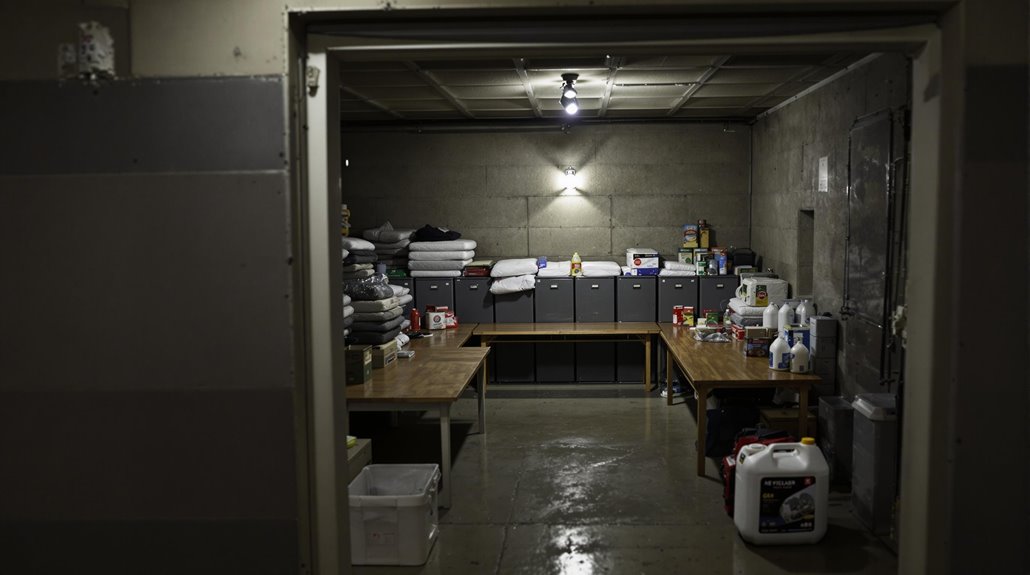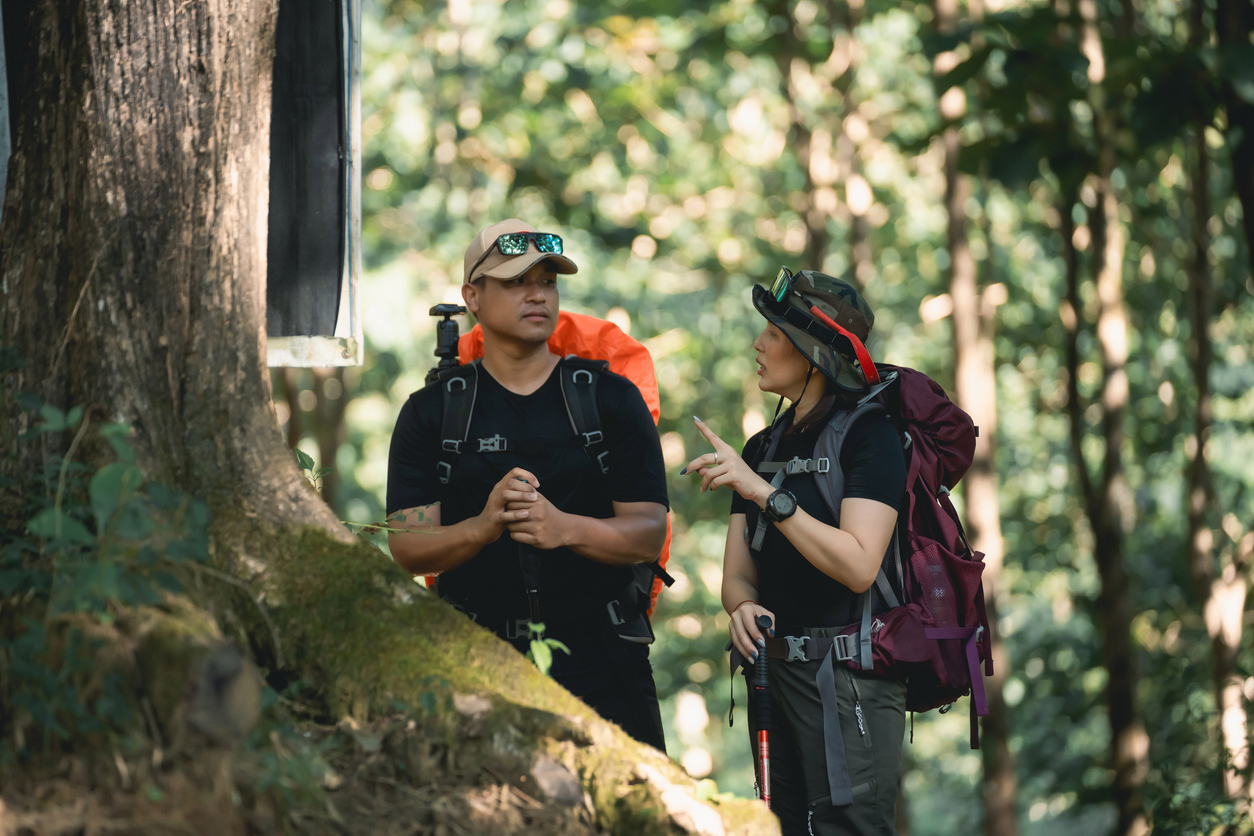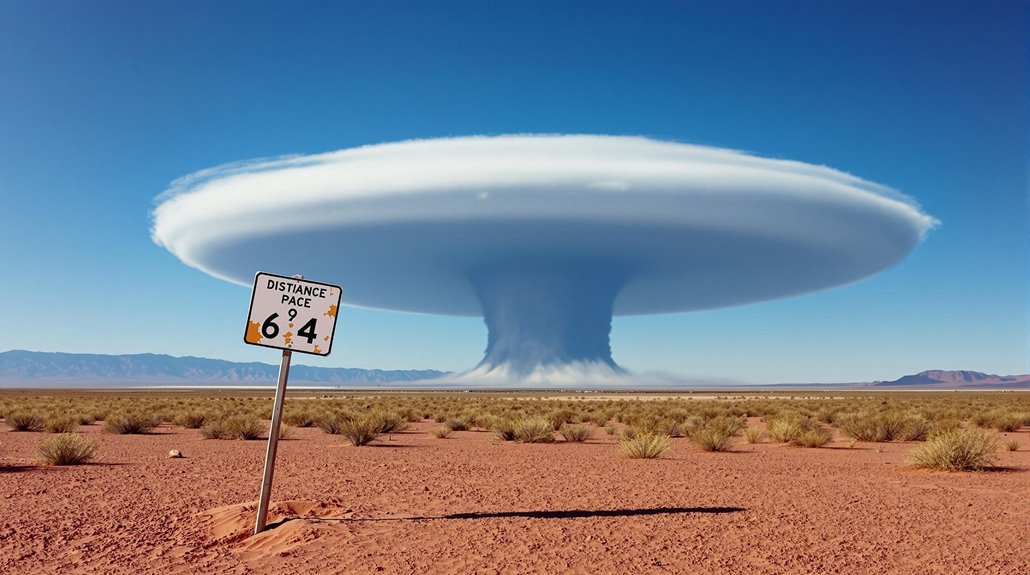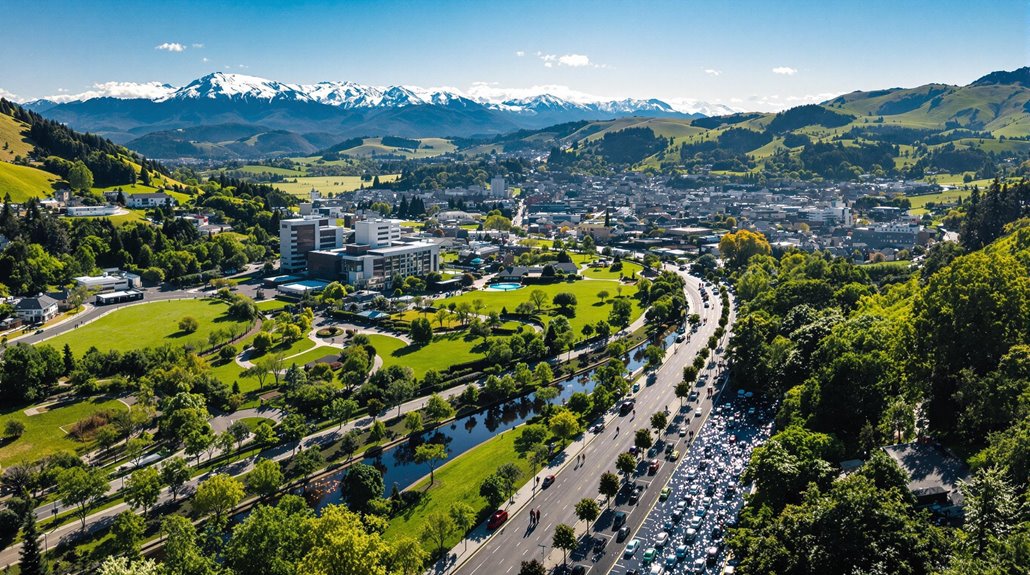Where Is the Safest Place in the House During a Nuclear War?

The safest location during a nuclear war is a windowless basement room at the center of your house, away from exterior walls. You'll want to choose a space constructed with dense materials like concrete or stone, which provide superior protection from radiation and blast effects.
Make sure you've got proper ventilation and enough room to store essential supplies. Understanding the key features of an effective shelter space can markedly increase your chances of survival.
Key Features of a Safe Room During Nuclear Attack
Creating an effective nuclear shelter begins with selecting the right location in your home. During a nuclear blast, you'll want to head to your basement or ground floor, which provides maximum protection from radiation and explosive forces. If you don't have a basement, choose an interior room that's farthest from the potential blast site.
The safest places are corners of windowless rooms constructed with dense materials like concrete or stone. These materials effectively shield against the intense heat and pressure of a nuclear bomb. You'll want to avoid hallways and doorways, as these areas can amplify the destructive power of the shockwave.
Remember, the key is to put as much solid material as possible between you and the explosion while staying in a space that won't concentrate the blast's effects. Installing a proper ventilation system is crucial for maintaining air quality and ensuring long-term survivability in your chosen shelter location.
Basement vs. Ground Floor Protection Levels
When comparing shelter options during a nuclear attack, basements consistently offer superior protection over ground floor spaces. While your ground floor might protect you from the initial blast wave, it won't shield you as effectively from radiation exposure. You'll want to seek shelter in a basement, particularly one that's concrete-reinforced, as it provides considerably better protection against both the blast pressure and radiation.
Proper air filtration systems are essential to remove dangerous fallout particles and maintain clean air in your basement shelter. If you're choosing between locations, head to the center of your basement, staying away from walls and exterior surfaces. This central position maximizes your protection from all nuclear effects. Avoid ground floor areas near windows and doors, as these weak points allow radiation to penetrate more easily.
Remember, the deeper underground you can get, the better your chances of surviving both immediate and long-term nuclear threats.
Strategic Positioning Within Interior Rooms

Three key factors determine your ideal position within an interior room during a nuclear event: distance from exterior walls, structural support, and radiation shielding.
During a nuclear war, you'll want to position yourself in the corner of an interior room that's farthest from any doors or windows. The best places are typically windowless bathrooms, closets, or central rooms on lower floors, but avoid narrow hallways where shockwaves can intensify.
If a nuclear apocalypse occurs, you should face away from the blast direction while staying close to the strongest walls. Remember that basements offer superior protection due to their reinforced structure and natural shielding from both immediate and lingering radiation threats.
By strategically choosing your position within these spaces, you'll maximize your chances of survival against both immediate and lingering radiation threats. Extended stays in these confined spaces can lead to spatial constraints stress, so maintaining adequate physical movement within safe areas is essential.
Essential Supplies for Your Nuclear Shelter Space
Having secured the safest position in your shelter, you'll need to stock it with the right supplies to survive a nuclear emergency. Start with essentials like potable water, non-perishable food, and medical supplies that can sustain you for extended periods. Keep generators and backup batteries ready to maintain power for critical equipment and lighting.
Don't forget protective gear, including hazmat suits and respirators, to shield yourself from radioactive fallout when venturing outside becomes necessary. Stock up on personal hygiene items and decontamination supplies to maintain cleanliness and health. Include radiation detection equipment to monitor threat levels, and communication devices like emergency radios to stay informed.
Consider adding books, games, or other entertainment items to help preserve mental well-being during long periods of confinement. Following basic survival kit needs, ensure you have emergency shelter materials and fire-starting tools in case of structural damage to your home.
Structural Elements That Maximize Safety

Structural design plays a critical role in maximizing your protection during a nuclear event. When seeking shelter from nuclear weapons, you'll find that not all places in your home offer equal protection. The best locations are corners of windowless rooms on lower floors, particularly in buildings with concrete reinforcement. These corners provide essential protection from the initial blast wave, while the building's structural integrity helps shield you from immediate effects.
If you have access to a basement, make it your primary shelter choice. Underground spaces offer superior protection from radioactive fallout compared to above-ground alternatives. If you're in a multi-story building without basement access, position yourself in central corridors on the lower floors. These areas benefit from the surrounding structural mass, which acts as a natural barrier against radiation and blast effects.
Radiation Shielding Materials and Methods
Effective radiation shielding depends on both materials and their thickness. You'll need at least 3 feet of concrete or 1 foot of lead to block harmful gamma radiation from nuclear fallout. Soil also works as an effective barrier, which is why basement locations offer superior protection compared to upper floors.
To maximize your shelter's safety, you'll want to reinforce walls, ceiling, and floor with these shielding materials. When properly installed, they can reduce your radiation exposure by up to 90%. Don't forget to address potential weak points - cover your windows and seal any cracks where radioactive particles might enter.
The more complete your shielding coverage, the better protected you'll be. Remember that interior rooms provide additional protection since they're already surrounded by layers of building materials.
Home Modifications for Enhanced Protection

To maximize your home's protective capabilities, you'll need to make several critical modifications that go beyond basic radiation shielding. Start by reinforcing your windows, doors, and walls with sturdy materials like sandbags and plywood to withstand blast effects.
Key modifications should include:
- Installing high-efficiency ventilation systems with quality air filters to guarantee radioactive particles from entering
- Creating a dedicated fallout shelter in an interior room without windows, equipped with emergency communication devices and power supplies
- Setting up storage areas for essential supplies like bottled water, non-perishable food, and medical supplies
Focus on making these improvements before a crisis occurs. Your fallout shelter should be your top priority, as it'll serve as your primary refuge during a nuclear event. Remember to regularly maintain these modifications and rotate stored supplies to ascertain they remain effective.
Critical Areas to Avoid During Nuclear Impact
During a nuclear attack, knowing which areas of your house to avoid can mean the difference between life and death. Research from the University shows that hallways and doorways, which may seem like safe spots, can actually amplify the shockwave's pressure up to 18 times your body weight, potentially crushing your bones.
In the event of a nuclear blast, stay away from windows, as they'll instantly shatter and spray lethal glass shards. The best place to seek shelter is in the corners of windowless rooms on the building's far side from the explosion. If you're in a front-facing room when the blast occurs, position yourself in the corner of the wall that faces the explosion.
Remember that lightweight structures like log cabins won't provide adequate protection - opt for concrete-reinforced buildings whenever possible.




